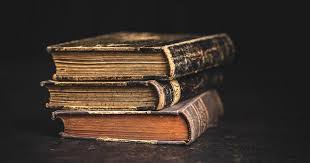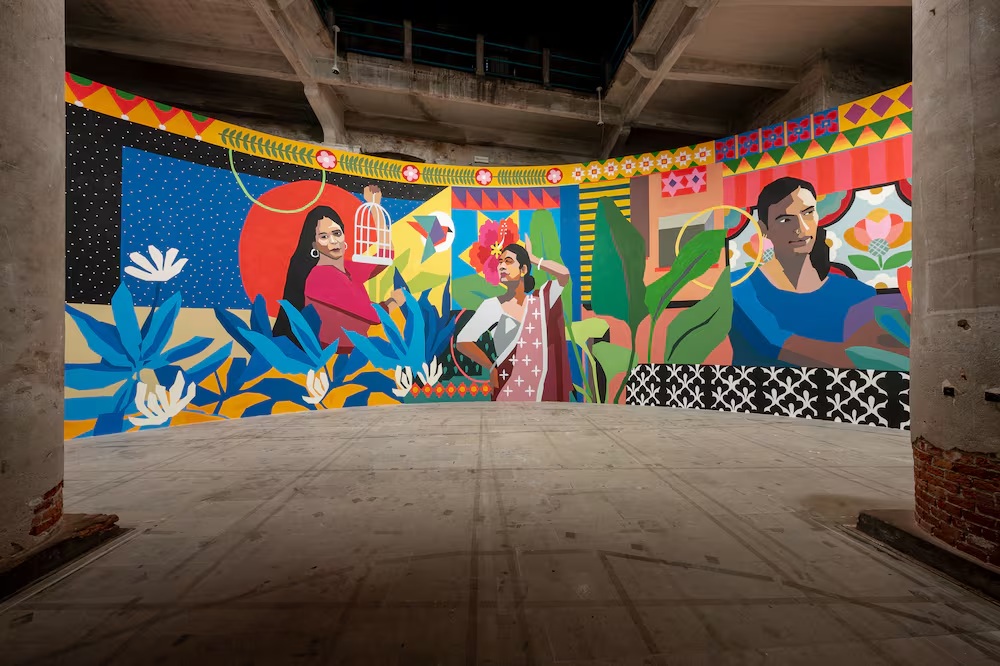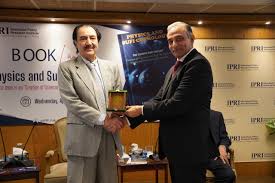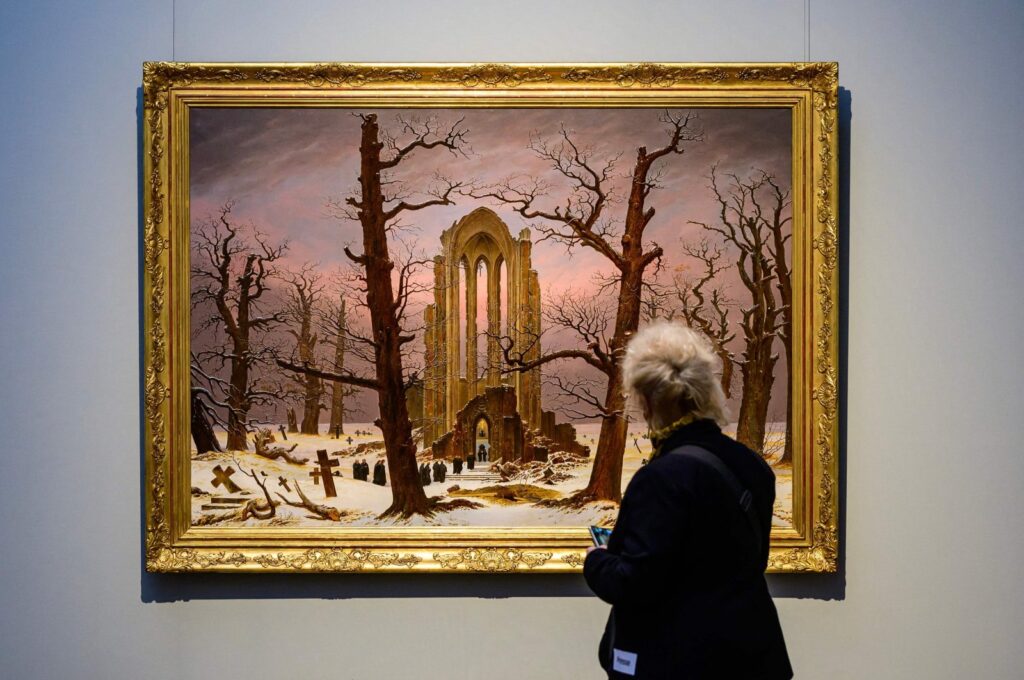
Maghie Ghali
Beirut and The Golden Sixties: A Manifesto of Fragility, an exhibition continuing at Berlin’s Gropius Bau, maps a brief but charged period in Lebanon’s modern history that is often romanticised amid the country’s more recent crises, through the lens of Beirut’s prolific artistic scene.
“When these artworks arrived, and we started opening the crates, it’s as if you’re opening different chapters of your own life, memories from your own childhood, your experience of the war, your experience of joy in moments of hardship, and relationships and friendships that you’ve built over the years,” Sam Bardaouil, one of the men behind the exhibition, tells The National, recalling his youth in Lebanon.
“This exhibition is not just about addressing the injustices of how art history has been written — which is, of course, something that is very important in our work — this is really very personal.”
Co-curated by Bardaouil and Till Fellrath — the current directors at Berlin’s Hamburger Bahnhof and the previous associate curators at Gropius Bau — the exhibition spans from 1958 to the onset of Lebanon’s civil war in 1975.
Its conception began around the time that Lebanon’s 2019 mass protests and economic collapse began, developing further as the 2020 Beirut port explosion destroyed the city. The show provides a comprehensive study of the city’s socio-political conflicts that plague Lebanon, with 230 artworks by 34 artists, and more than 300 archival documents from nearly 40 collections.
:quality(70)/cloudfront-eu-central-1.images.arcpublishing.com/thenational/ZPZFZA7XAJHUJG3FAOF73MV5BY.jpg?w=810&ssl=1)
“One of the central questions that we were interested in asking is, if indeed Beirut had a golden age back in the ’60s, how come we had a civil war erupting in 1975?” Bardaouil asks. “We keep on going back to this narrative of the Golden ‘60s, where everything was blossoming. Every time we have a crisis, like at this current moment, when there’s so much unravelling in Lebanon, many people find comfort in thinking that, ‘oh, we had a great moment.’
“But if that moment was so great, why did we end up having a civil war, which lasted for 15 years — the repercussions of which are still very prominent until this very moment?” he says. The exhibition seeks to question this narrative and debunk the myth of this utopian golden age that everybody runs back to; to try to understand what the achievements were and what were the things that obviously failed, and led to a war at the time.”
The early 1900s were a time of great upheaval for the Mena region, leading to a constant flow of intellectuals and cultural practitioners seeking solace in post-Ottoman Beirut. The Lebanese banking secrecy law passed in the 1950s meant foreign currency came in and new art spaces and museums opened up. Yet, underneath this veneer of diversity and openness, antagonism brewed.
Lebanon’s nostalgia for the golden age of glittering parties, better infrastructure and uncomplicated living, often overlooks the sectarian tensions that were mounting. The artistic scene at the time was very influenced by the political manoeuvring and social issues arising, with many artists using their work as a form of activism.
:quality(70)/cloudfront-eu-central-1.images.arcpublishing.com/thenational/FEWHHEWHQBFWXOAE3MV4KVQYII.jpg?w=810&ssl=1)
“There was a lot going on in many countries, around Lebanon, experiencing major conflicts, a coup d’etat, revolutions, and a lot of people were leaving their countries, coming to Beirut and seeking a place of refuge, but also a platform through which they could continue whatever it was that they were involved in, in their places of origin,” says Bardaouil. “The zeitgeist at that moment was extremely charged, because there were so many political projects that had started in different places that were interrupted, that came to Beirut with the hope that it could be the place to shelter these ideas, nurture them and allow them a voice that could expand beyond.
“A lot of artists that came over — both Lebanese and not Lebanese — were already affiliated in a lot of these political projects, and what they would do as artists, as the needs of creating more awareness or serving a certain cause, ranged from very outward political work to more subtle motifs.”
The show is divided into five thematic sections, which dissect the socio-economic movements reflected in the art, created by the likes of Shafic Abboud, Aref El Rayess, Etel Adnan, the Basbous brothers, Dia Azzawi, Simone Fattal, Paul Guiragossian, Helen El Khal and others.
It starts with Le Port de Beyrouth: The Place, exploring the notion of belonging to a singular place by artists from different communities across the region.
Takween (Composition): The Form traces the link between artists’ political affinities and their subscription to a style or a school, ranging from Oriental Abstraction to European Informalism. Bardaouil says artists began working with imagery perceived as traditional to distinguish themselves from adopted colonial, European-centred styles. This led to work with calligraphy, pre-Islamic art, or local epics such as Antar wa Abla.
“You see in one of the sections of the show, Monster and Child: The Politics, artists are adopting certain issues like the Palestinian flag, like the war in Vietnam, the Algerian conflict, and many other socio-economic injustices,” Bardaouil says. “Lovers: The Body is one of my favourite sections, because it shows something really spectacular, which is in how advanced in its thinking, and how welcoming the art scene in Beirut was at the time, for positions that were still perhaps in more conservative ways of thinking, not as accepted or encouraged.
:quality(70)/cloudfront-eu-central-1.images.arcpublishing.com/thenational/QCQZHQE4IFCA5GJCLDKZNLERWE.jpeg?w=810&ssl=1)
“Women artists in that generation, like Huguette Caland, Saloua Raouda Choucair, Laure Ghorayeb, Nadia Saikali and many others, were all very active and prominent,” he explains. “They were not men painting the bodies of women; they were women, painting their own bodies and the bodies of other women in a very consistent way that spoke of a feminist, liberationist and emancipatory way of thinking, which was aligned with the liberation movements that were taking over many places around the world at the time.”
The exhibit’s final section centres on the eruption of the civil war, how artists navigated that period and the continuing impact of the war on Beirut’s cultural scene. Many art spaces shut and artists migrated to other countries, as has happened once more with Lebanon’s current crises.
Artists were unable to work in the same mediums, so works on paper, works in black and white, and themes of hopelessness or destruction were prevalent. This section also included a newly commissioned work by Joana Hadjithomas and Khalil Joreige. This was in the form of an immersive video installation showing the destruction of artworks during the port explosion of 2020, and a sound piece looking at how poetry can stand against chaos.
The curators hope that by examining the past, the current crises in Lebanon can be put into perspective; and if nothing else, act as a cautionary tale for future generations.
“It really feels that history’s repeating itself, when you look at some of the images and compare them to the explosion in 2020,” Bardaouil says. “What the exhibition seeks to encourage is to complicate this simplistic narrative, in order to perhaps through this complication, try to understand why we are still stuck in that loop.
“In a way, this exhibition is a form of activism. Through the language of art, you allow people to have a conversation, in the hope that this conversation leads to a certain shift in awareness and understanding, which could ultimately help us change the world even just a little bit.”
Courtesy: thenationalnews
The post Berlin art show probes Beirut’s fabled Golden Age appeared first on The Frontier Post.








